Everyone says that Smeg makes the most stylish stand mixer, but they’re wrong — it’s ProCook’s
Mixing things up in all the right ways

This affordable stand mixer looks the part — and then some. There are lots of clever features, including grippy feet and a neat speed dial, so you almost wouldn't know that this was a budget option, except that it struggles to clear the edges on the mixing attachment a little. For £400 less, it's worth keeping a spatula to hand and accepting the minor flaw.
-
+
Incredible value - it's affordable, but feels expensive
-
+
Chic, classy aesthetic
-
+
Easy to use and quiet to run
-
+
Doesn't wobble, even with tough mixes
-
+
Pouring shield included (rare for stand mixers)
-
+
Compatible with KitchenAid attachments
-
-
Doesn't quite reach the edges of the bowl if your mix is powdery
-
-
You might not want ProCook branding on the side of your stand mixer
Why you can trust Woman & Home

Cream stand mixers scream class. Done right, they'll look like a chic KitchenAid, gracing your counter with their covetable presence. The only difference is that your bank balance will be hundreds of pounds healthier. That sounds like a tasty offer to me.
For decades, collections of the best stand mixers were dominated by Smeg and KitchenAid. It's understandable — they do a very good job — but I've noticed ProCook cropping up time and time again. Their curved, chrome design looks every part as premium as other models, but ProCook has learned from other people's mistakes and made a very special stand mixer.
With small tweaks, including grippy feat and a neat splash guard, I think ProCook has cracked into the stand mixer market. They're causing a high-speed stir — sorry, I had to — and I'm very happy to see it.
Specifications
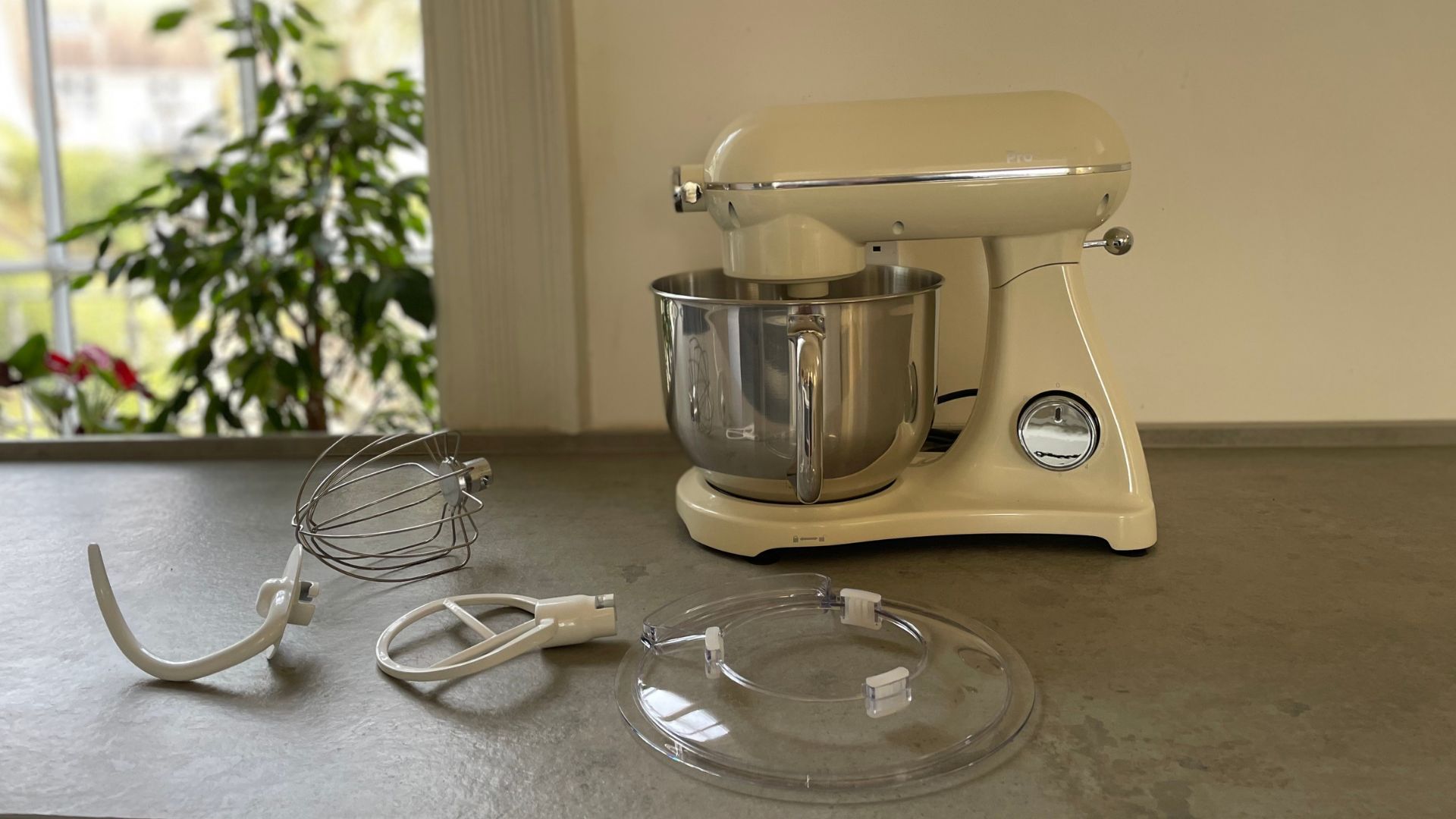
| Dimensions | 38.5 x 25.5 x 35cm |
| Weight | 7.1 kgs |
| Power | 1800 watts |
| Capacity | 6-litres |
| Accessories | beater, whisk, dough hook, splash guard |
| Speed settings | 6 |
| Warranty | 2 years |
Unboxing
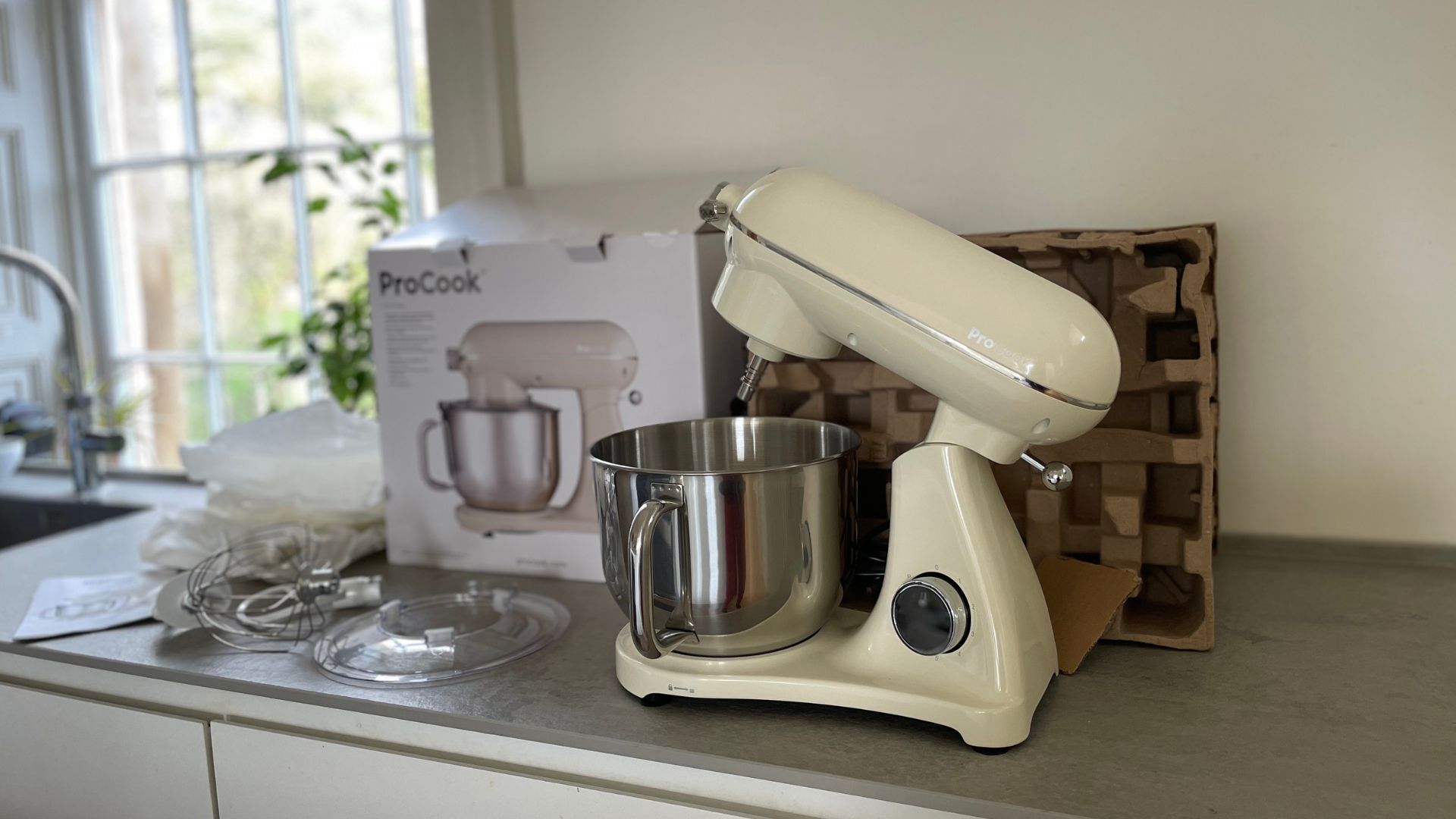
I can't tell you how pleased I was with the way that this stand mixer was packaged — no judgment on my passions please — it's actually very important. The way that a brand chooses to box up and send their appliance to you tells you a lot about their attention to detail and all the cogs going on behind the scenes.
ProCook scored top marks here because their stand mixer came in completely recyclable packaging, Everything was wrapped in thick paper or cardboard, which means you can keep your bin free from any nasty plastics and non-recyclables. This would be a given for other appliance categories, but stand mixers are notoriously retro with their packaging, normally sending you copious amounts of polystyrene and plastic. It's a very nice, eco-conscious touch.
With the main body of the ProCook Stand Mixer, you'll get the three basic attachments. These include a whisk, dough hook, and a beater. All of these are stainless steel, so weighty and robust, but coated in white to match the delicate colour scheme of my cream stand mixer. The beater has a slight curve to it, which I've never seen before, but I can see its logic. The spoons that we use are curved, so why not make the same scooping motion with the attachments?
There's also a splash guard, which has little rubber attachments that slot it onto the head of the stand mixer. This is a nice touch that's not integrated into all models, but it makes life very easy for adding little extras and pouring when you're finished with your mixes.
Who would it suit?
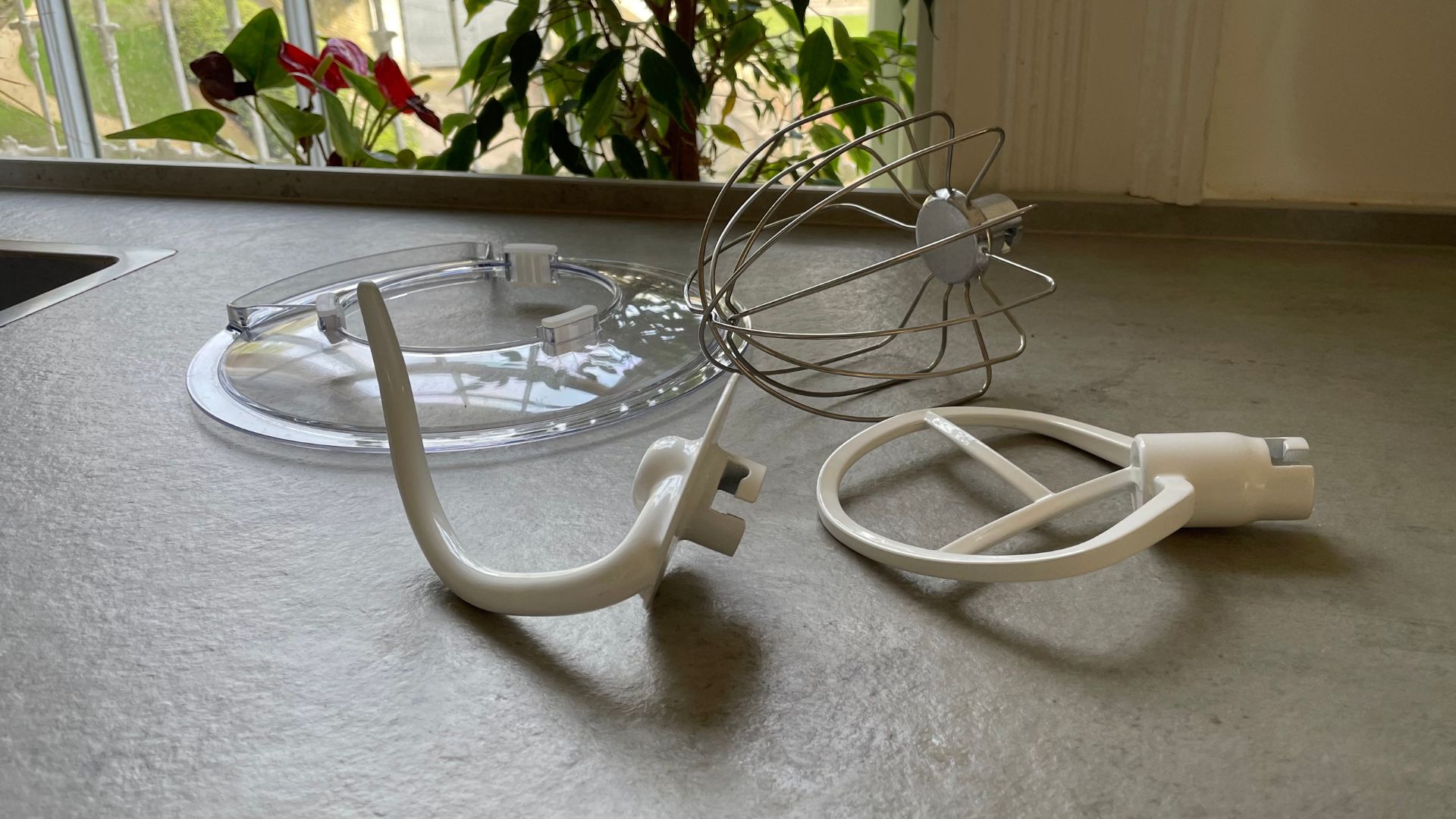
The ProCook Stand Mixer has a lot to recommend it. First of all, the price tag. The average stand mixer sits around £300-600, depending on which brand you go for. Having just handled six KitchenAids, I wasn't sure this £250 stand mixer would be up to scratch, but the ProCook has done really well. It feels just as robust and the 1,000-watt motor makes it almost twice times as powerful as a KitchenAid.
I promise I'll stop talking about KitchenAids in a second, but it's worth noting that the ProCook Stand Mixer is compatible with all of the brand's attachments. This means that if your old KitchenAid has gone kaput, or if you want a KitchenAid, but it's too expensive, you can enjoy all of their extras without having to fork out the big bucks in the first place.
I'd also like to shout out the ProCook for the style-conscious. The curved edges and subtle colour reminded me a lot of the Smeg stand mixer, except that this is cheaper. You're going to keep this out on your counter - stand mixers are hard to store away - so how it looks carries a lot of value.
What is it like to use?
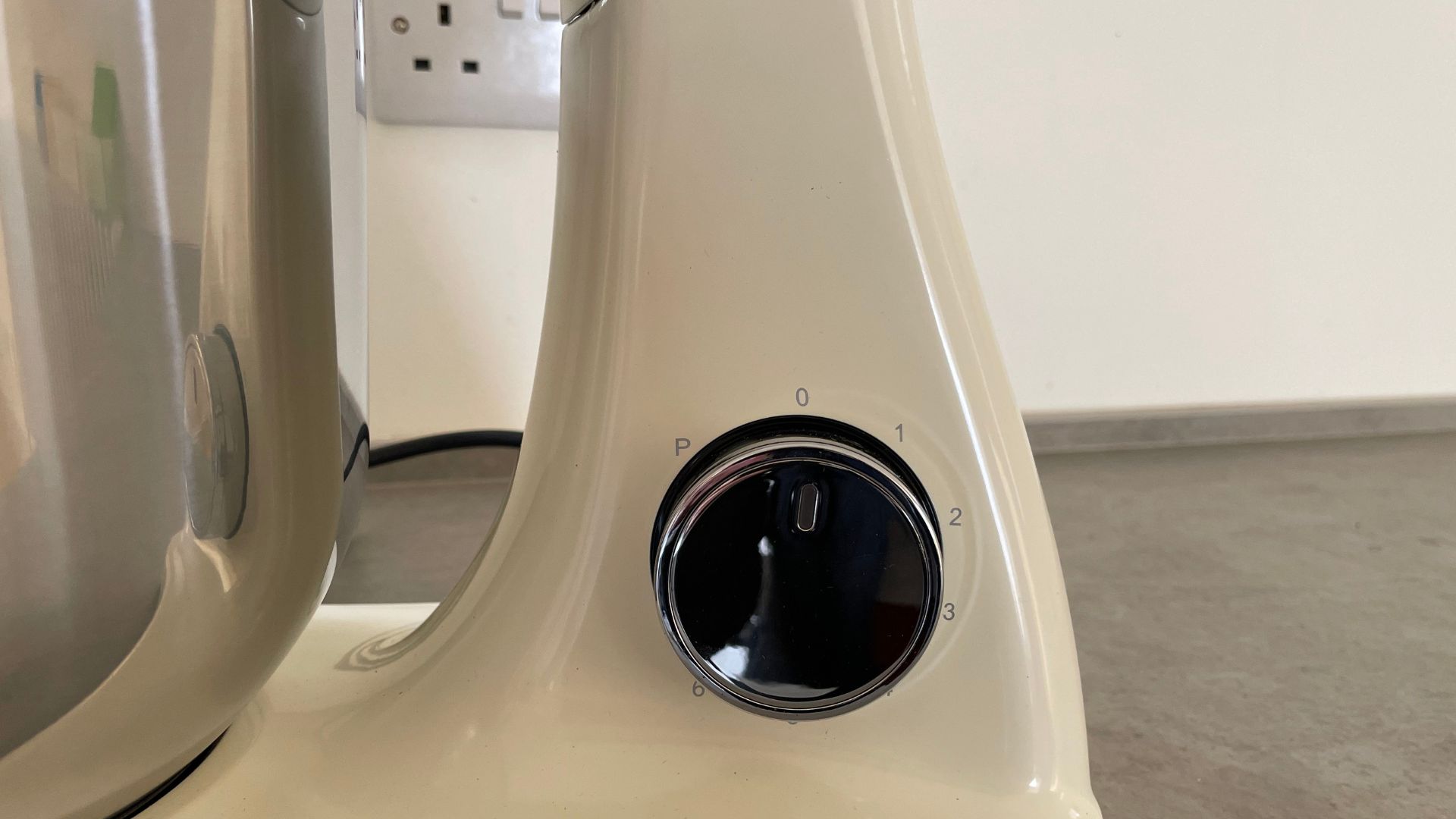
There are lots of neat features integrated into the ProCook stand mixer's design that tell you that this was designed by bakers (and with the information of some great market research).
On the surface, this looks like your standard tilt-head mixer. This means that you push a lever to tilt back the top of the stand mixer, and then fit all of the attachments. You'll twist the dial on the base to choose between six speed settings, which is slightly different from the lever on the head design that lots of opt for. I prefer having the dial on the front, as long as your using the stand mixer side on. If you're going to place it front-on, this could be a bit of a pain, but it's no different to the opposite setup on side-lever mechanisms. The dial clicks satisfyingly between speed settings, so there's no ambiguity about whether you've changed between yours or not.
Then, there are nice extras, including grippy feet on the bottom of the stand mixer, keeping it stable when you crank up the power. You've also got a nice handle on the bowl, which makes it easy to lock, unlock, and hold the bowl for pouring mixes.
Test 1: cake
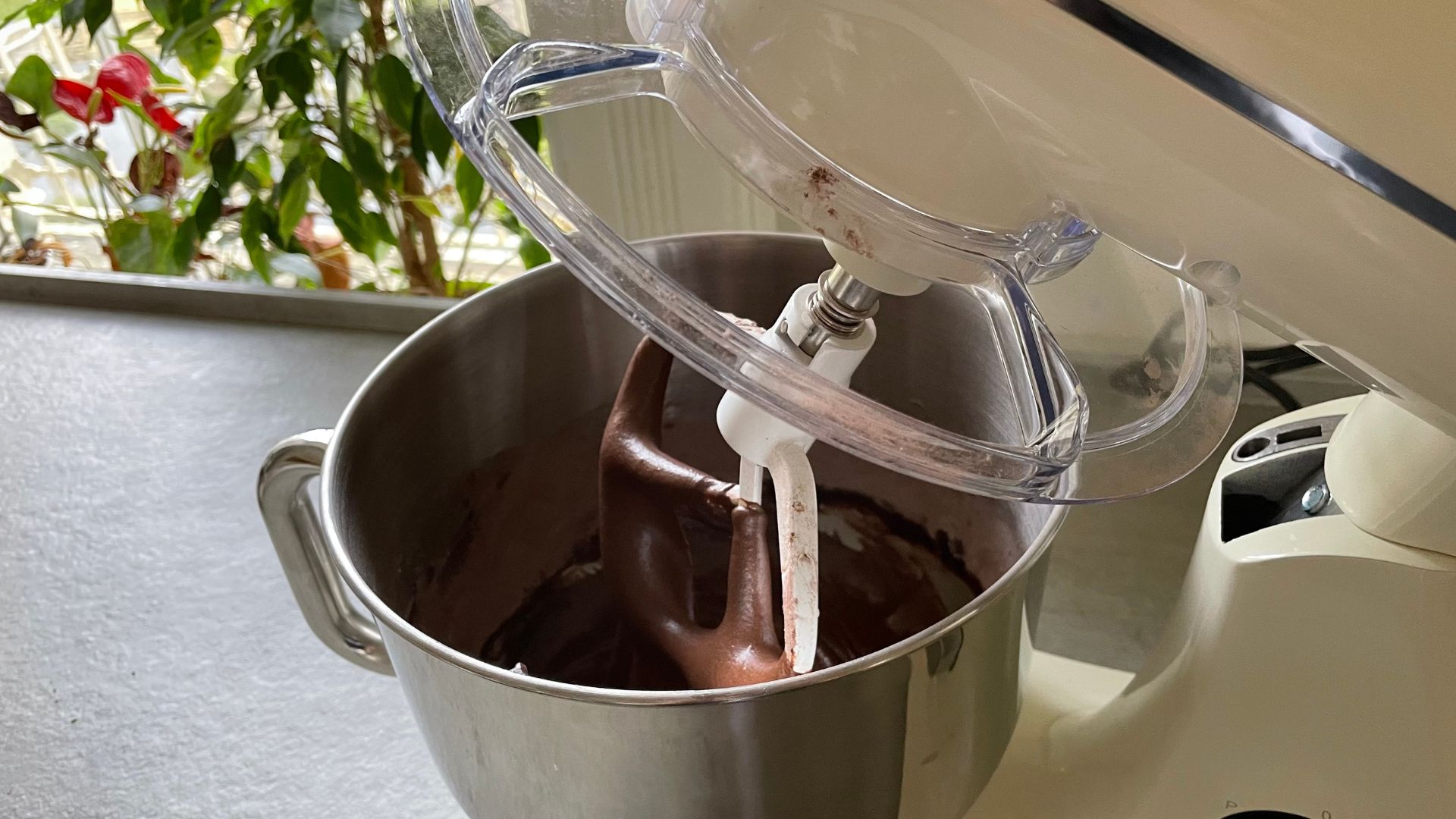
I ran a few tests with the curved beater, but the most telling is how it handles cake mix. I made a chocolate cake by creaming together butter and sugar, which the ProCook does well. Then I added in my flour, eggs, and cooca powder, which is where I spotted the only flaw in the ProCook's work. The beater can't quite reach the edge of the bowl, so you end up leaving a fine rim of flour at the edges. All you need is a spatula to scrape around the sides and you'll be able to get the ProCook mixing everything together again. It's a bit of a hassle compared to other stand mixers, but if you're shopping on a budget, you'll probably take the £250 and keep your spatula nearby.
This is the test that I also used the splashguard for. These are often sold as extras, so to have it included in the main package of the ProCook is a little treat. The splashguard has little rubber feet that let you slide the splash guard onto the head of your stand mixer, then it lifts up whenever you unlock the stand mixer. It did a great job of keeping all the flour and cocoa powder in the bowl and it slotted on neatly.
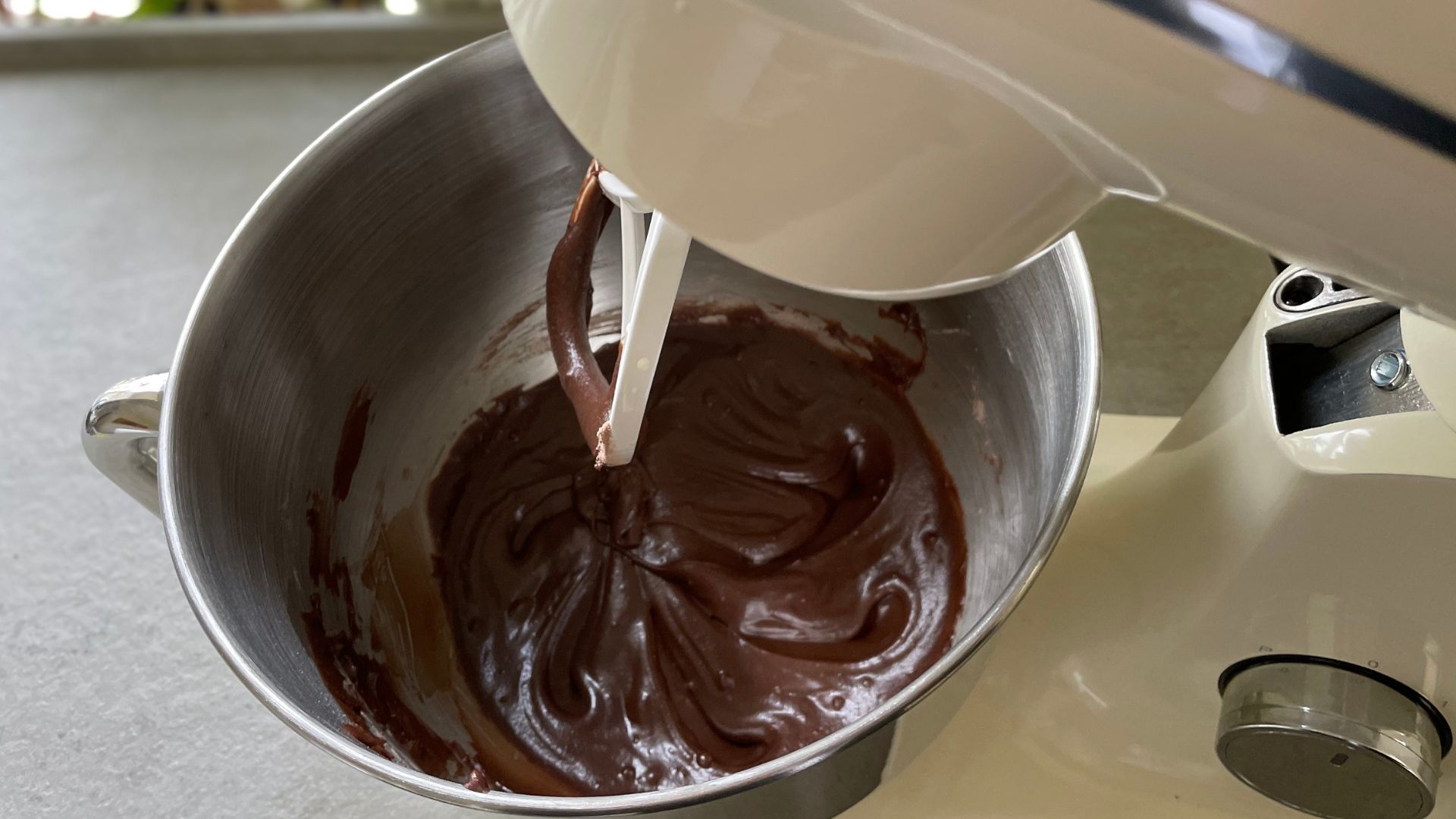
I've also since made cookies and brownies using the beater. You might notice that this is curved, which is actually a little quirky for stand mixers. I did some research into why ProCook might have curved their beater and the experts seem to suggest that the curve is more like hand mixing, because it sweeps and folds. This should help coverage, thoroughness, and efficiency, which I did see a little of, but both my cookie and brownie mixes struggled to pick up the flour and sugar at the edges of the bowl.
Test 2: bread
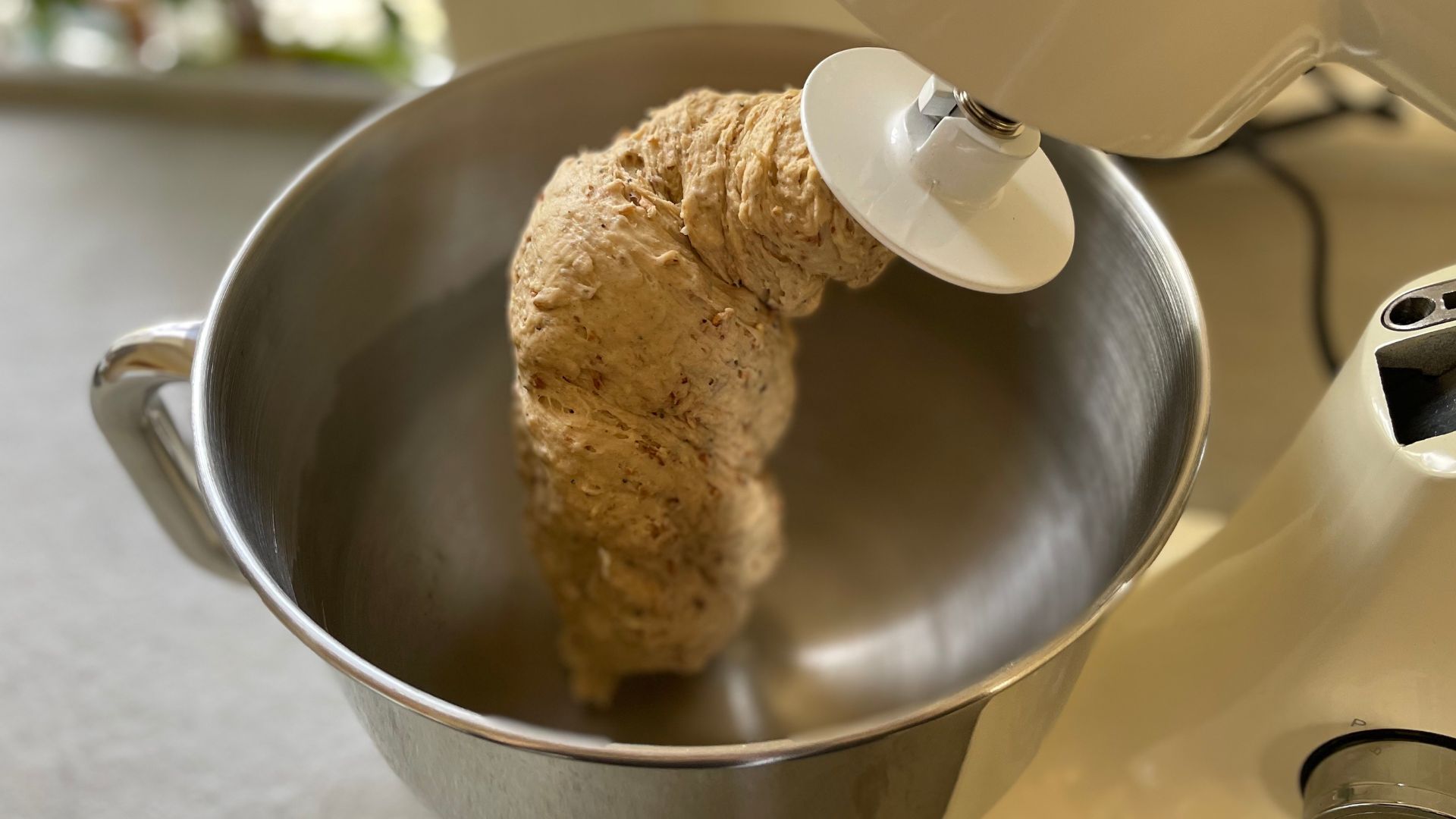
Making bread dough is first and foremost a test of how well the dough hook attachment can knead bread. However, this thick, dense mix can also destabilise the base of the stand mixer. In fact, it’s quite a common problem with tilt-head mixers (and often drives the decision for serious bakers to invest in bowl-lit models instead). However, ProCook has added one simple, clever feature that keeps the stand mixer glued to the counter: grippy feet. These suctioned themselves onto the surface so that even my low hydration doughs on a relatively high speed didn’t wobble the ProCook Stand Mixer at all.
My standard test makes a simple mixed grain loaf from 500g of flour and you can see in the images that there’s plenty of room for me to double the capacity and make two loves (enough for eight pizza bases) and have them well-kneaded. The sparkling clean sides of the bowl are a testament to the elasticity that the ProCook managed to work into the bread dough. After five minutes, it was soft, springy and elastic. I worked this by hand on the surface for about twenty seconds, but this yarn achieved perfection in record time (and without making much noise either).
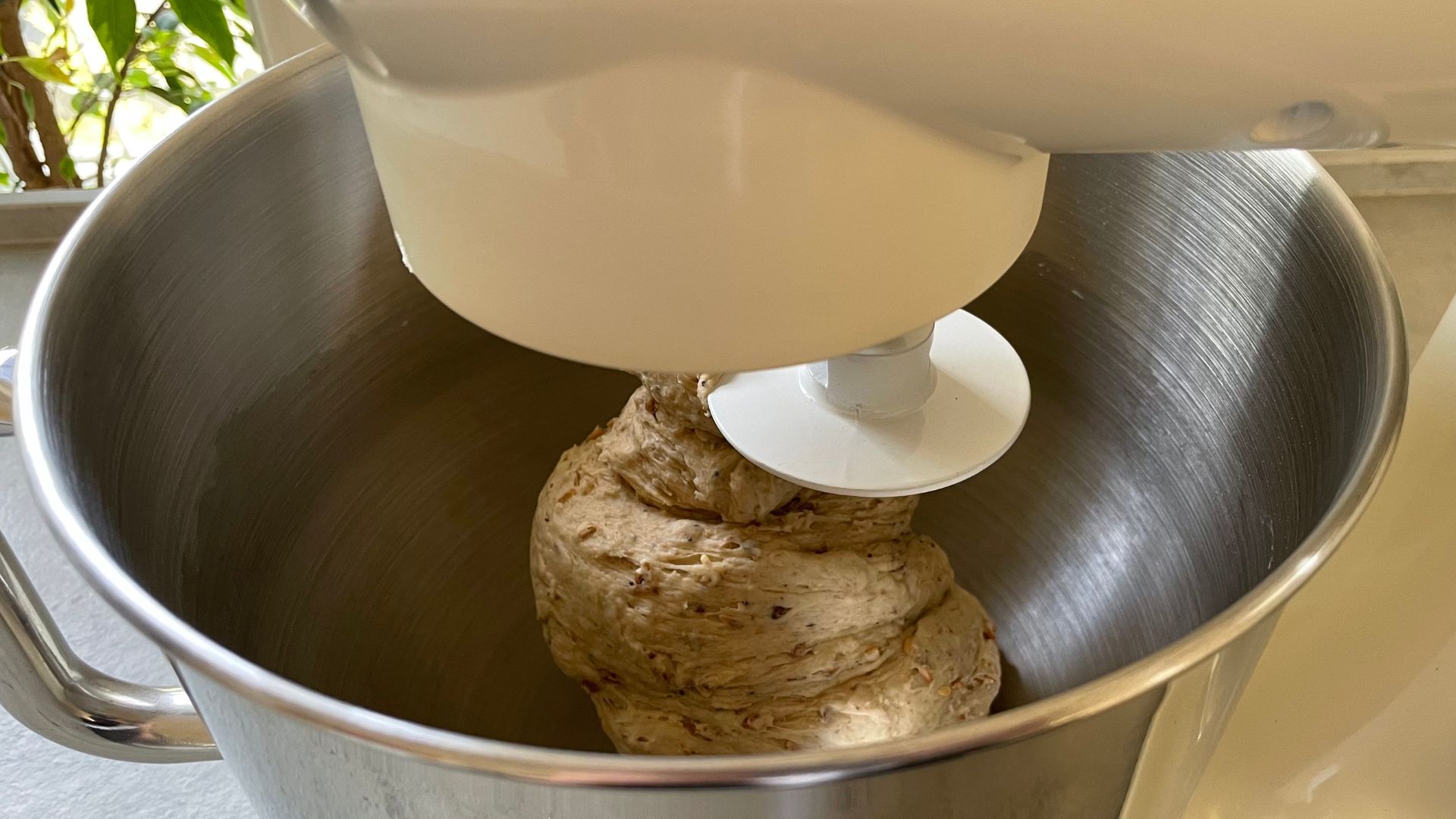
clean sides of bowl, quick and quiet
Test 3: whipped cream
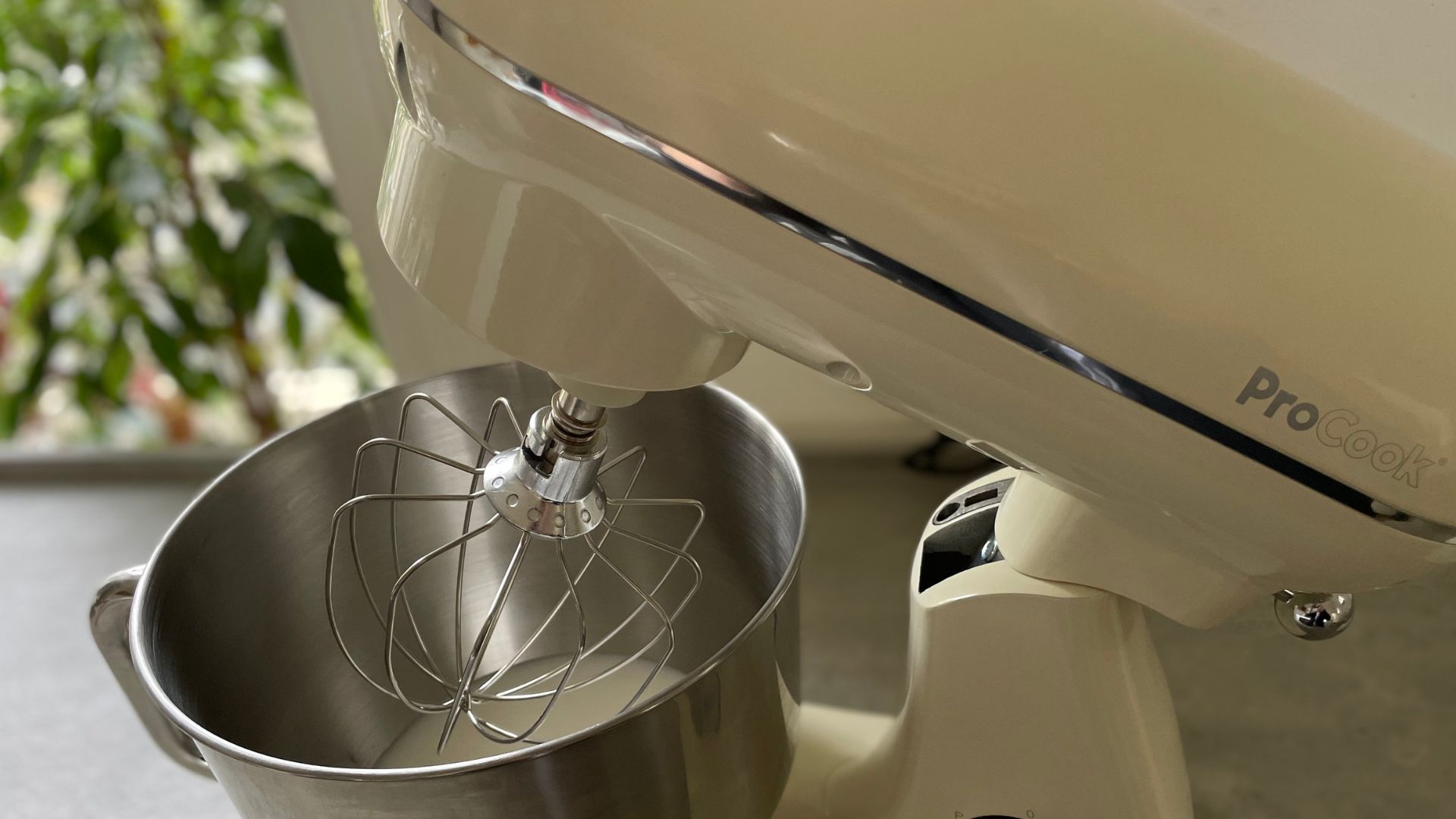
You might think that all whisks are the same, but ProCook’s has slightly wider wires (some people call them tines). Whilst this made it a little slower at whipping cream (it took about one minute longer than KitchenAid), it does have some advantages. The wider tines make for much more gentle movement, so you can easily fold and mimic hand mixing a lot easier. This was great when I had whipped up some egg who’s for a light and fluffy cake and needed to add some flour into the mix. It’s the kind of thing that I’d normally take over by hand, but the ProCook, on its lowest speed setting, was gentle enough
These wide tines also don’t drag as much, so I could use them to whip thicker mixes a lot easier. For example, I handmade a chocolate cake, but it was a bit lumpy (the price I paid for rushing things and skipping the sieve). In the spirit of giving the ProCook a proper test, I poured the cake mix in and set it to whisking. In a couple of minutes, this had whipped — pun intended — my lumpy mix into shape. It’s wonderful.
Cleaning
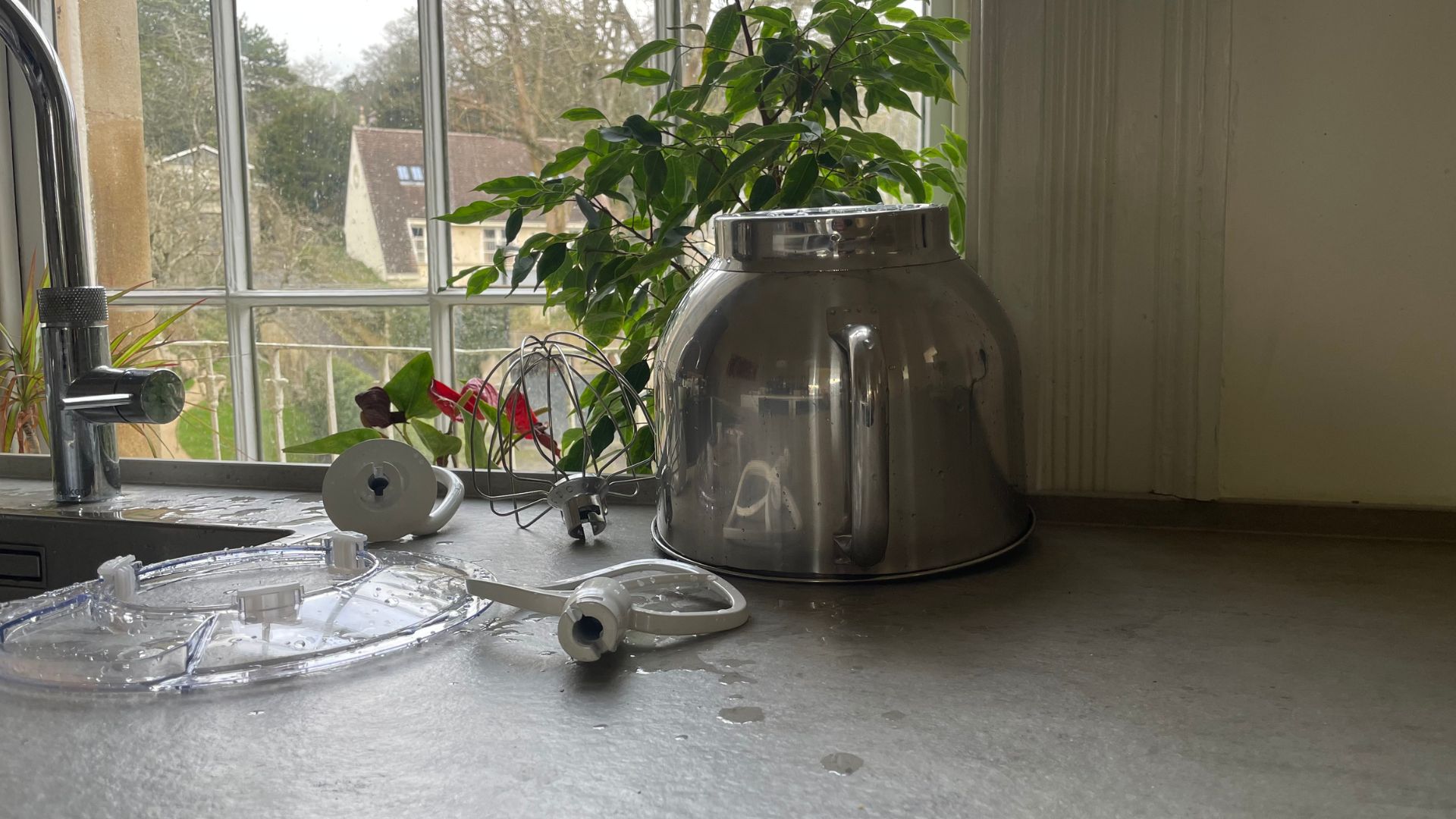
The accessories are all dishwasher safe, which means that you can let your appliances quite literally do the dirty work. The bowl’s handle might require some careful tessellation alongside your plates and dishes, but it’s not too tall to roll in under the next dishwasher rack.
I actually prefer to clean stand mixers by hand; it puts a lot less wear and tear on all the different parts and stands you in much better stead for keeping yours in top condition for longer. All the different parts were easy to clean (even the dough hook that I had let bread dough dry onto). The bowl also wiped clean and came up really well, so all the bits that could have gone in the dishwasher stayed looking good.
I expected the cream body of the stand mixer to very quickly descend into a canvas for my chocolate cake mix, bread dough, and whipped cream, but it still looked remarkably sparkly after I was finished testing. There was, of course, a little splatter on the body, but it wiped off with a clean damp cloth really nicely.
How does it compare?
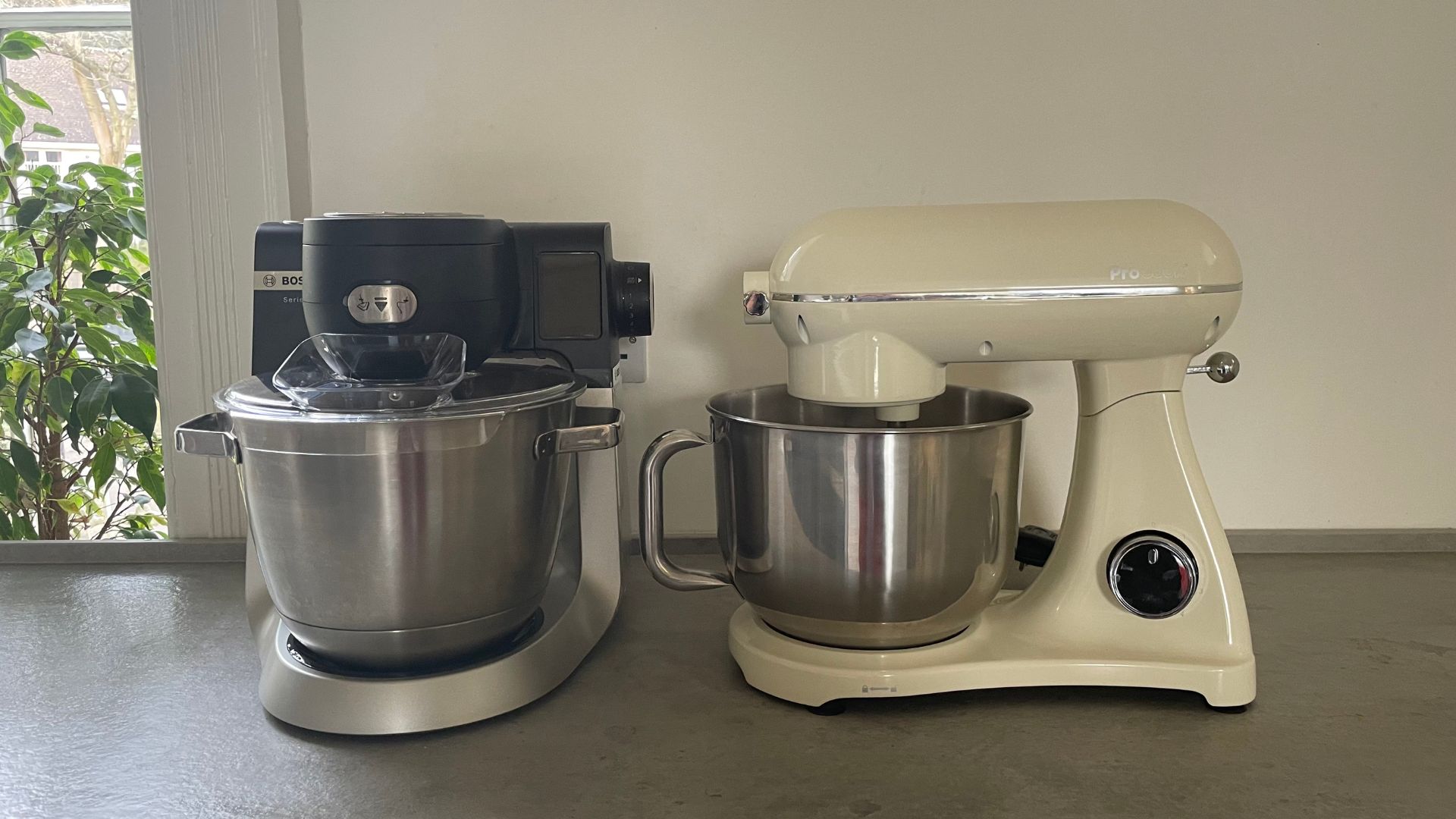
There are two stand mixers that really spring to mind that you’ll want to take a look at as well as one that I want to point out too. If I was to line up all the best stand mixers, you’d notice that this shares its appearance most closely with the Smeg stand mixer. I actually prefer the ProCook Stand Mixer, because it’s quieter, the body feels more robust, and the control dial is a lot more tactile. If you want the Smeg name adorned on the side of your stand mixer, I don't blame you, but you're doubling the price of the stand mixer for that. I surprised even myself by coming to the ProCook conclusion.
This wouldn’t be a stand mixer article if I didn’t bring in a KitchenAid comparison. If money were no object, these are the models that almost everyone would buy. So what’s the ProCook like in comparison? First, I should say that the KitchenAid Artisan is double the price of the ProCook Stand mixer. Both come with the same accessories and similar mechanisms, except that the ProCook is lighter and quieter than the Artisan.
The reasons that the Artisan is more expensive make sense. Artisans come with ten-speed settings (and even a half-speed setting if you buy the right one), so you get more nuance and control over your bakes. It's also better at scooping and incorporating flour into your mixes when you're using the beater, so the overall baking experience feels a lot slicker. You pay for this privilege, as well as a 5-year instead of a 2-year warranty, which for some people is worth it. I'd still go for the KitchenAid, because I bake often. However, if you want a budget stand mixer, it doesn't get better than this.
Should you buy it?
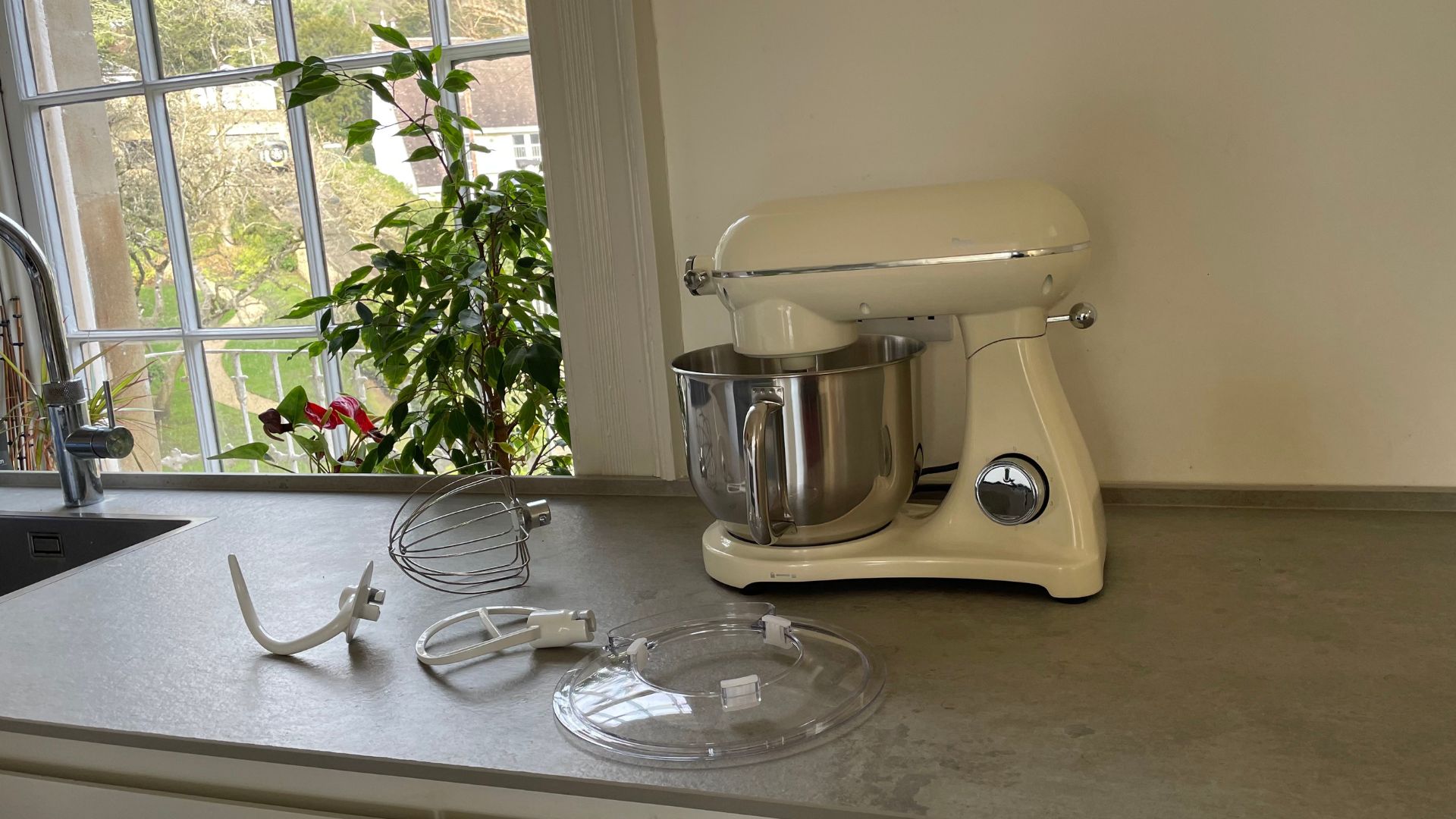
If you want a budget stand mixer, you can't do better than the ProCook. It's stylish, kneads dough expertly, and it's powerful too. The only compromise you make is with the mixing attachment, but a spatula and a little extra effort could save you £250.
How we test
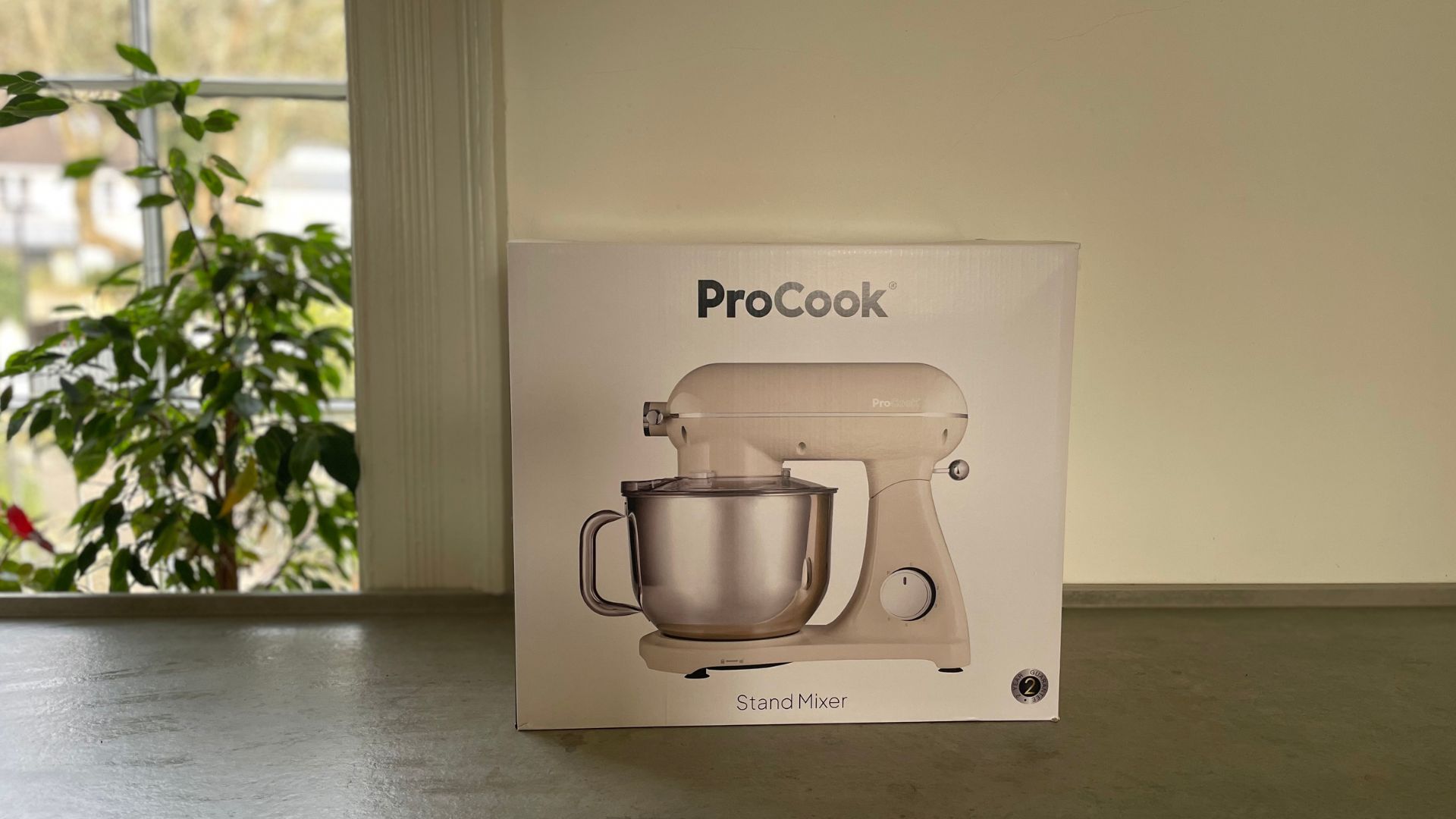
Stand mixer are one of my favourite products to test. I'm a regular baker and use my stand mixer almost daily — I know it sounds excessive, but baking is my love language — which means that mine gets a lot of use. I'm naturally curious about what else is out there on the market and so as soon as I see a new launch, I want to test it out and share all the nitty gritty details with you.
I bake cakes, cookies, bread, and I whip cream as part of my standard tests. Then, away from my testing spreadsheet and notebook I carry on baking whatever takes my fancy to get a good idea of how versatile the stand mixer is as well as how it fits into everyday life. I try to cover off all the big bonuses as well as the pain points that crop up, so that you know exactly what you're investing in. If you still have questions after reading through my review, don't hesitate to email me. I'm always eager to chat about baking.
Find out more about how we test stand mxiers on our dedicated page
Sign up for the woman&home newsletter
Sign up to our free daily email for the latest royal and entertainment news, interesting opinion, expert advice on styling and beauty trends, and no-nonsense guides to the health and wellness questions you want answered.

Laura is woman&home's eCommerce editor, in charge of testing, reviewing and creating buying guides for the Homes section, so you'll usually see her testing everything from the best dehumidifiers to sizing up the latest Le Cruset pot. Previously, she was eCommerce editor at Homes & Gardens magazine, where she specialised in covering coffee and product content, looking for pieces tailored for timelessness. The secret to her heart is both simplicity and quality. She is also a qualified Master Perfumer and holds an English degree from Oxford University. Her first editorial job was as Fashion writer for The White Company.
-
 Meryl Streep just wore the trending denim style that's set to replace barrel leg jeans this summer
Meryl Streep just wore the trending denim style that's set to replace barrel leg jeans this summerIt's my job to spot trends, and I guarantee you're going to want these flattering jeans
By Caroline Parr Published
-
 JLo's elegant midi dress convinced me to add pattern to my monochrome wardrobe
JLo's elegant midi dress convinced me to add pattern to my monochrome wardrobeThe singer proves florals are still very much in style
By Kerrie Hughes Published
-
 Duchess Sophie makes a case for buying multiples in fourth version of her favourite dress - and Kate Middleton's a fan too
Duchess Sophie makes a case for buying multiples in fourth version of her favourite dress - and Kate Middleton's a fan tooShe marked the 80th anniversary of VE Day at Westminster Abbey
By Caroline Parr Published